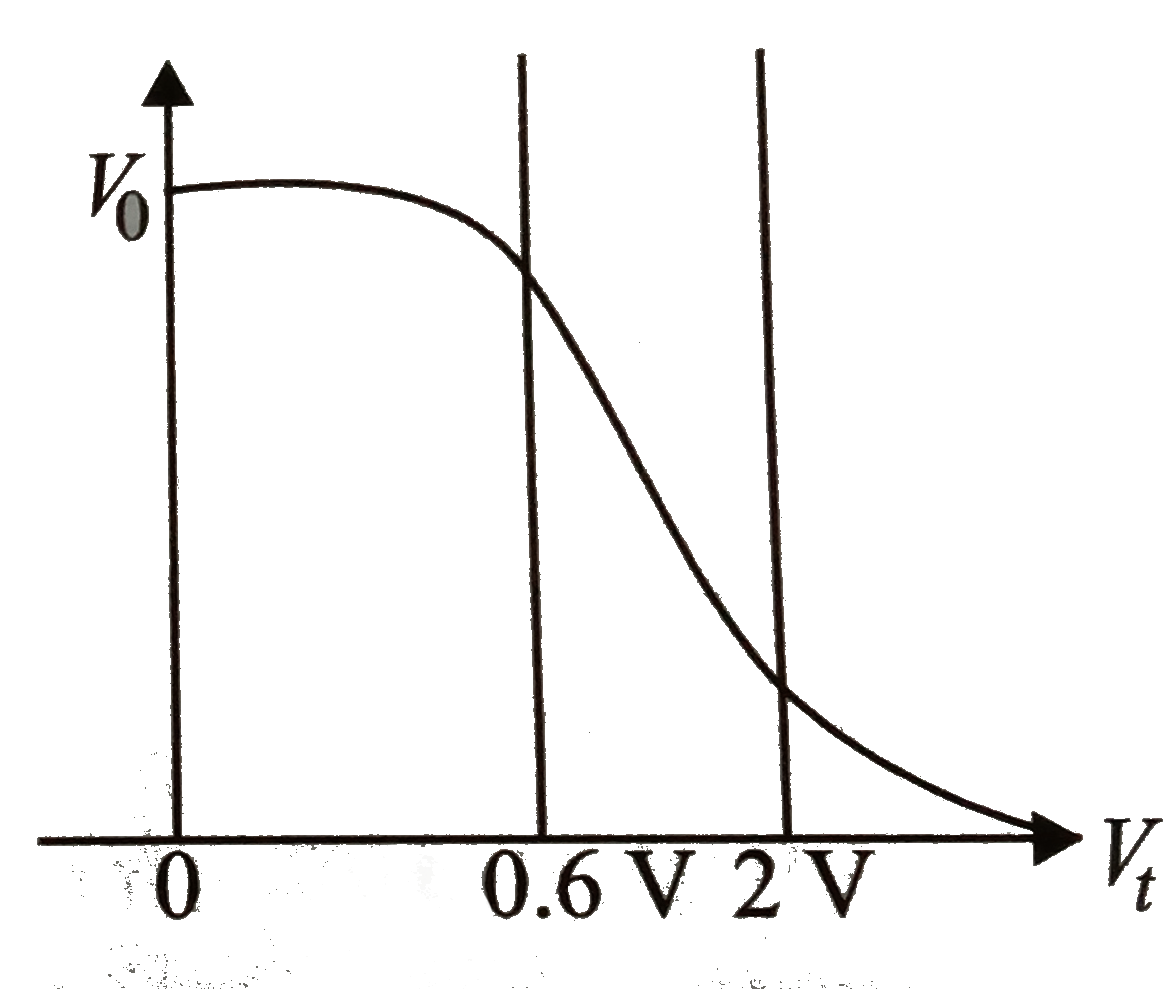The transfer characteristics of a base biased transistor has the operation regions, namely, cutoff, active region and saturation region. For using the transistor as an amplifier it has to operate in the
active region
cutoff region
saturation region
cutoff and saturation
The correct Answer is:A
To determine the operation region of a base biased transistor when used as an amplifier, we can follow these steps:
1. Understand the Operation Regions:
- A transistor has three main operation regions: cutoff, active, and saturation.
- In the cutoff region, the transistor is off and does not conduct current.
- In the saturation region, the transistor is fully on and conducts maximum current.
- The active region is where the transistor can amplify signals.
2. Identify the Purpose of Each Region:
- The cutoff region is used when the transistor is acting as a switch in the off state.
- The saturation region is used when the transistor is acting as a switch in the on state.
- The active region is where the transistor can amplify input signals.
3. Determine the Required Region for Amplification:
- For a transistor to function as an amplifier, it must operate in the active region.
- In this region, the transistor can respond to small changes in input voltage and produce a larger output voltage.
4. Conclusion:
- Therefore, for a base biased transistor to be used as an amplifier, it must be operated in the active region.
Final Answer:
A base biased transistor operates as an amplifier in the active region.
---
- A transistor has three main operation regions: cutoff, active, and saturation.
- In the cutoff region, the transistor is off and does not conduct current.
- In the saturation region, the transistor is fully on and conducts maximum current.
- The active region is where the transistor can amplify signals.
- The cutoff region is used when the transistor is acting as a switch in the off state.
- The saturation region is used when the transistor is acting as a switch in the on state.
- The active region is where the transistor can amplify input signals.
- For a transistor to function as an amplifier, it must operate in the active region.
- In this region, the transistor can respond to small changes in input voltage and produce a larger output voltage.
- Therefore, for a base biased transistor to be used as an amplifier, it must be operated in the active region.
A base biased transistor operates as an amplifier in the active region.
Topper's Solved these Questions
- SEMICONDUCTOR ELECTRONICS : MATERIALS , DEVICES AND SIMPLE CIRCUITS BOOK - NCERT FINGERTPS ENGLISHCHAPTER - SEMICONDUCTOR ELECTRONICS : MATERIALS , DEVICES AND SIMPLE CIRCUITS EXERCISE - HOTS
8 Videos
- SEMICONDUCTOR ELECTRONICS : MATERIALS , DEVICES AND SIMPLE CIRCUITS BOOK - NCERT FINGERTPS ENGLISHCHAPTER - SEMICONDUCTOR ELECTRONICS : MATERIALS , DEVICES AND SIMPLE CIRCUITS EXERCISE - NCERT
8 Videos
- RAY OPTICS AND OPTICAL INSTRUMENTSBOOK - NCERT FINGERTPS ENGLISHCHAPTER - RAY OPTICS AND OPTICAL INSTRUMENTSEXERCISE - NCERT Exemplar
11 Videos
- WAVE OPTICSBOOK - NCERT FINGERTPS ENGLISHCHAPTER - WAVE OPTICSEXERCISE - Assertion And Reason
15 Videos
Similar Questions
The transfer characteristics of a base biased common emitter transistor is shown in the figure. Which of the following statements are true?

View SolutionDraw the tramsfer characteristic curve of a base biased transistor in CE configuration. Explain clearly how the active region of the Vo versus Vi curve in a transistor is used as an amplifier.
View Solution
Knowledge Check
Fig.shows that transfer characteristics of a base biased CE transistor. Which of the following statements are true?
 AAt Vi=1V, it can be used as an amplifierBAt Vi=0.5V, it can be used as a switch turned offCAt Vi=2.5V, it can be used as a switch turned onDAll of these
AAt Vi=1V, it can be used as an amplifierBAt Vi=0.5V, it can be used as a switch turned offCAt Vi=2.5V, it can be used as a switch turned onDAll of these
The operating point of transistor amplifier should be in
View SolutionIn Lac operon this lies upstream to the operator region
View SolutionWhat is active region for transistor?
View SolutionA p−n−p transistor is said to be in active region of operation, When
View SolutionTransfer characterstics [output voltage (Vo) vs. input voltage (Vi)] for a base biased transistor in CE configuration is as shown in the figure. For using transfor as a which, it is used

View SolutionA transistor has three impurity regions , emitter , base and collector. Arrange them in order of increasing doping levels.
View SolutionA transistor has three impurity regions , emitter , base and collector. Arrange them in order of increasing doping levels.
View Solution
